The value of a luxury car has traditionally been measured by the pound and feet, by the size and number of cylinders of its engine and, of course, by the number of trees and cowhides used to complete its passenger compartment. But the old measurements have begun to change, and nowhere is that more apparent than in the sixth-generation BMW 7-Series.
True, with U.S. buyers now set to get only the long-wheelbase version, it’s bigger than ever. But the new sedan also gets lighter, thanks to the extensive use of carbon fiber, aluminum and ultra-high-strength steel. It uses a twin-turbo engine to punch out incredible amounts of power from a relatively modest 4.4-liter V-8. And while there’s more leather and wood than ever – some of it barely apparent to passengers – BMW expects buyers to be drawn to the incredible array of technologies that have increasingly come to define the best luxury vehicles.
In developing the 2016 7-Series, BMW engineers intentionally set out to one-up the Mercedes-Benz S-Class, the latest version having become the current, high-tech automotive benchmark. And, at least in terms of the number and range of new features the 7-Series offers, it would seem they’ve succeeded. From a comfort and safety standpoint, never mind the manufacturing side, the new BMW 750i is a high-tech showcase.
But a new J.D. Power study released this week offers a compelling, cautionary note, finding that there is so much technology being rolled out on today’s cars that many buyers often don’t use those features – indeed may not even know they’re there. Will buyers of the new BMW 7-Series embrace the sedan’s infrared vision, its semi-autonomous technologies and its new gesture-operated controls?
That’s something we set out to discover as we headed up to the Monticello Motor Club, a private track a couple hours north of New York City, where BMW this week staged the first media drive of the 2016 750i.
We’d like to say we can clue you in on all the various features embedded in this new luxury sedan. In reality, we didn’t come close to experiencing them all after a long day of driving on-track and off. There is simply so much technology that we’ll be pressing hard to try everything out when we can line-up a longer drive in the weeks ahead. That said, there’s no question that the 2016 BMW 750i is an impressive machine, blending both traditional and new elements of luxury while maintaining the performance and handling characteristics behind the brand’s catchphrase, “the ultimate driving machine.”
(Next BMW M3 to get plug-in hybrid drive. Click Here for this exclusive report.)
From a visual standpoint, the 2016 remake doesn’t stand out as a breakthrough. Owners of the gen-5 7-Series might not even notice all the changes initially, nor the subtle one-inch lengthening. Two distinctive character lines run virtually the full length of the vehicle, are among the most immediately apparent updates.
Virtually everywhere you look, the changes BMW designers and engineers have made have a high-tech purpose. Take the larger twin-kidney grille, for example. The kidneys automatically open or close, depending upon how much cooling air the engine needs, to improve aerodynamics.
There are new headlamps, as well. Unfortunately, American buyers – for now – won’t be able to get the 2016 BMW 750i with the all-new laser lamps that will be available in many other parts of the world. Capable of lighting things up almost a half-mile away, and even splitting around the car ahead of you, they don’t currently meet U.S. standards, though that could change.
While visually the body might not have changed, there’s a major revolution just out of sight. The 2016 7-Series makes extensive use of new, super-strong steels and even borrows from the BMW i family when it comes to introducing carbon fiber, surrounding the passenger compartment with the ultra-strong, super-light material.
That not only enhances passenger safety but, in total, pulls about 200 pounds off the total weight of the new 7-Series. It also lower’s the vehicle’s center of gravity. Translation: improved performance and handling, and better mileage.
At first glance, the interior might not seem to have changed all that much. The basic shape of the instrument panel and the general layout of the seating is in sync with the outgoing model. There are some subtle details: even better leathers and woods, for example, designers even layering out a veneer of wood over the C-pillar where a passenger might only notice while getting in or out of the vehicle. Buttons, meanwhile, are now covered in galvanized metal to give a more satisfying feel.
Backseat passengers may be getting the biggest benefit out of the 7-Series makeover, something that reflects the reality in China, now the world’s second-largest luxury market. Buyers there are likely to opt for chauffeurs, but want to retain control. There’s a new tablet touchpad built into the rear center console that can operate virtually all the non-driving vehicle functions.
For those who don’t want to play with all that technology, they can lay back in sumptuous seats that recline like a business jet. The front passenger seat can even be folded out of the way for the right rear passenger to further stretch out. Oh, and to set the mood, there are a variety of scents that can automatically be injected into the cabin.
Front and rear seats alike offer king-like luxuries, including multiple different massage functions, and there are not just heated and cooled seats; even the armrests can be heated.
Up front, there is the latest, fifth-generation iPad controller which BMW officials insist is the easiest yet to use. But they’ve all sorts of other ways to operate vehicle functions, including the brand’s first touchscreen LCD display. And its operation will be instantly familiar to anyone with a smartphone, allowing both pinch and zoom moves.
One of the more intriguing additions to the new 7-Series makes it the first vehicle to offer gesture control. A phone call coming in? One move accepts it, another declines. You can change radio stations or adjust volume with a simple move of the hand. You even get one gesture to program for a function of your choice.
Some of the gestures seemed to be either to use than others but we sense it would only take a little effort to transform these moves into something many drivers will use automatically, day in and day out.
Along with the big center display, there’s a new 12.3-inch reconfigurable LCD display handling gauge duties. It’s a much higher-res screen than in cars like the Jaguar XJ, so it does a convincing job of replacing conventional, mechanical readouts. But it also automatically changes layout and color when you switch driving modes. In Sport, for example, red is the dominant hue.
The list of new technologies could cover several more pages of text, so we’ll try to focus on a few highlights.
Along with all-wheel-drive, the new 7-Series can be ordered with active four-wheel-steering. At low speeds, the rear wheels turn up to 3 degrees in the same direction as those up front, at higher speeds they turn in the opposite direction. In a parking lot or making a turn, that cuts the turning radius nearly a meter, to 12 meters. At highway speeds, BMW claims it ensure greater control and maneuverability.
The 2016 7-Series gets BMW’s version of what Mercedes calls its Magic Ride Control. Here, a stereo camera looks out at the road ahead, automatically adjusting things like the damper settings of the front and rear air suspension to reduce road harshness or, where necessary, to firm things up in hard cornering. The vehicle also now uses navigation data to determine where you’re driving. It can automatically downshift, for example, as you start to head up a steep hill, or go to a sportier setting for the steering in tight corners.
The cameras also serve as part of a semi-autonomous suite of features that, firstly, let you take hands off the wheel for up to about 15 seconds while cruising down the highway. BMW officials say they would allow you to do so even longer if not for regulatory issues. Should that change they could electronically download a software change to let you completely lift your hands off, as Tesla hopes to do with its new Pilot technology.
The new Beemer not only offers the increasingly requisite forward collision warning with autobraking – and pedestrian detection – but will even begin to steer itself around an obstacle, if necessary.
(Automakers rapidly expand use of crash avoidance technology. Click Here for more.)
Sadly, a number of features won’t immediately be available in the U.S. – not only the laser headlamps but also the new auto park system. The old 7-Series was able to parallel park with a touch of the button. Now, however, buyers in many markets abroad will be able to step out when they get home, tap a button on the keyfob and the sedan will automatically park itself in your garage.
That fob, incidentally, is now “smart,” with a small touchscreen of its own you can operate much like a smartphone.
(BMW one of 10 carmakers sued over “deadly” keyless ignition systems. Click Here for the full story.)
You can’t ignore the mechanicals, of course, but even here, technology has helped BMW deliver a powertrain that is more powerful, cleaner and more fuel efficient. The 4.4-liter twin-turbo V-8 will launch you from 0 to 60 in about 4.3 seconds – a half-second faster than the Mercedes S550, BMW officials took pains to point out.
To prove the capabilities of the new sedan, the maker had us chase a professional driver looping the twisty Monticello course. Setting up the controls correctly for the track run, we found ourselves picking up time each lap as we built confidence.
No, this isn’t an M5, but considering the length and mass – and the target buyer – the new 2016 BMW 750i is a blast to drive aggressively. And while it’s not quite as squishy smooth as a comparable S-Class, few will likely complain about the differences there, either.
Even though we might consider ourself technically savvy, we came away after a day with the 2016 BMW 7-Series struggling to absorb and master all of the new car’s features. Most buyers will likely be even more at a loss. The good news, said global marketing board member Ian Robertson, the development team aimed to make it possible for an existing owner to get in, start up and drive off without having to take a trainer course.
On the other hand, BMW is working with dealers to embed so-called “geniuses” who will be able to give new 7-Series a primer course before they leave the showroom. Perhaps more importantly, the Bavarian maker has created the Encore program. Buyers will be able to schedule an appointment in which a trained dealer rep will come to their home or office after a couple weeks of ownership to address questions and concerns and continue showing off more features.
That could prove critical. That new J.D. Power Drive Report, as well as other recent industry studies, showed that many buyers don’t even know, or use, all the features on their vehicles. And many are frustrated by technology they can’t master. It will take a user a little effort to get the most out of the new 7-Series, and some help from BMW won’t hurt.
We’re among those who need more time to master the new BMW 750i. But based on our first experience behind the wheel, we’ll be glad to volunteer for another opportunity.
(New JD Power study warns automakers adding more tech features than consumers can use – or want. Click Here for more.)

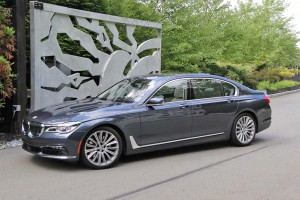
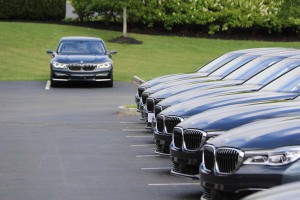
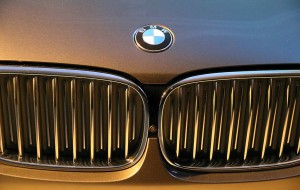
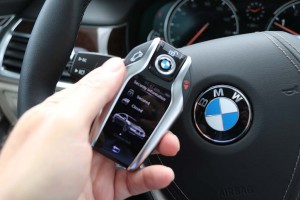

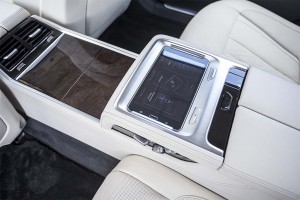
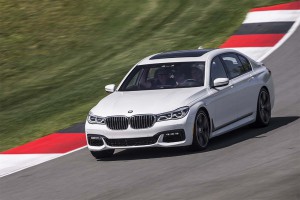
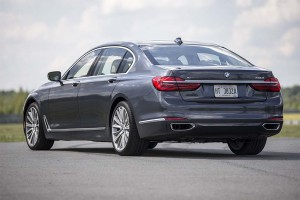

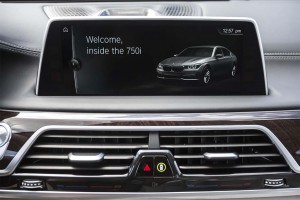
I’ll take the M3 or M5.
From a pure driving pleasure perspective, agreed!
Paul E.
Perhaps, I am a Luddite, but I can’t help but feel that all this techno mumbo jumbo is sucking the enjoyment out of driving. Then again, maybe Humanity is evolving into passive, non participating lumps.
I’m glad I’m approaching the last quarter of life. The future is boring me to, dare I say, death.
JT,
I am a techie, but a skeptical proponent of overloading cars with new technologies, as you may note by the tone of the 7-Series review and other pieces on TheDetroitBureau.com. The reality is that the course is largely set. But as I drove the 7-Series and listened to BMW officials talk about where their semi-autonomous features likely will evolve next, I thought back to a conversation I had with former BMW CEO Bernd Pischetsrieder almost 15 years ago…
This was before the term “autonomous driving” came into use, but the concept was already out there and Bernd was one of the more vocal proponents. I was interviewing him for a magazine profile in his Munich office and raised the topic, asking him how he could reconcile support for self-driving cars while working for a company that proclaimed it built “the ultimate driving machine.” The CEO noted that when he came to work every morning he drove on the A8 Autobahn, crawling bumper-to-bumper into the city. “What’s the pleasure in that?” he asked, suggesting he’d much rather let the car itself do the driving in that situation, catching up on sleep or getting an early start on work. But in the evening, he added, when he drove home, always well after the rush, he said he’d slip back into manual mode for a fun drive to his house in the foothills of the Bavarian Alps.
That logic makes sense. Humans are bad at handling many of the tasks we face on crowded roads, ie merging lanes. We get distracted and crash and make things ever worse. I personally LOVE driving. I hate crawling in traffic and, like Bernd Pischetsrieder, would be happy to have autonomous tech handle that annoying task, especially if it would actually reduce risk and speed up traffic.
Paul A. Eisenstein
Publisher, TheDetroitBureau.com
The AVs have a ways to go on many levels before they will be viable.
http://www.theregister.co.uk/2015/08/28/google_robocar_suffers_brain_freeze_after_seeing_hipster_cyclist/